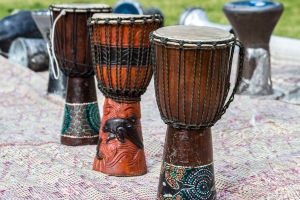Have you ever felt a rush of happiness after dancing to your favorite song? That’s the magic of movement—a natural mood booster.
Dance therapy takes this concept further, using structured movement to heal both the mind and body. It's not just about fancy steps; it's about unlocking emotions, reducing stress, and finding joy in motion.
The Power of Movement
When we move, our bodies release endorphins, chemicals that act as natural painkillers and happiness boosters. Dance therapy harnesses this effect, helping people express feelings they might struggle to put into words. Whether it's grief, anxiety, or pure joy, movement becomes a language of its own.
A Brief History
The roots of dance therapy trace back centuries, but it gained formal recognition in the 1940s. Pioneers like Marian Chace and Martha Graham discovered that dance could help psychiatric patients express emotions non-verbally. Today, it's a respected therapeutic practice used worldwide.
How It Works
A trained dance therapist guides participants through movements tailored to their needs. Unlike traditional talk therapy, this approach relies on body awareness and rhythmic expression. The therapist may use improvisation, structured routines, or even mirroring techniques to foster emotional release.
Who Benefits?
Dance therapy isn't just for professional dancers—it's for everyone. Those with anxiety, depression, or past trauma find relief through movement. It also aids individuals with eating disorders by rebuilding a positive body connection. Even seniors use it to stay agile and uplifted.
Dance Styles Matter
Different styles serve different needs. Contemporary dance encourages free expression, while ballroom offers structure. Some prefer the mindfulness of slow, fluid movements, while others thrive in energetic, rhythmic sessions. The key? Choosing what feels right for you.
Physical Benefits
Beyond emotional healing, dance therapy improves flexibility, strength, and cardiovascular health. It can ease chronic pain, enhance coordination, and even boost immunity. The body and mind work in harmony, making every step a step toward wellness.
Emotional Healing
Struggling to verbalize emotions? Dance speaks where words fail. It helps process grief, anger, and joy in a safe space. Group sessions foster connection, reducing feelings of isolation. Movement becomes a bridge to inner peace.
Challenges Addressed
Safety is crucial, especially for those with physical limitations. Therapists adapt movements to prevent injury. Ethical considerations, like consent and boundaries, ensure a respectful and supportive environment for all participants.
Science Backs It Up
Research confirms dance therapy reduces symptoms of PTSD, depression, and anxiety. Studies show it enhances self-esteem and body image. Neuroscientists explore how rhythmic movement rewires the brain, proving dance is more than just art—it's medicine.
Effectiveness of Dance-Based Interventions on Depression for Persons With MCI and Dementia — a review found that dance-based interventions are beneficial to alleviate depressive symptoms in people with cognitive impairment.
Getting Started
Ready to try? Seek a certified dance therapist through mental health organizations or online directories. If you're passionate about helping others, consider training in this rewarding field—accredited programs are available worldwide.
Conclusion
Dance therapy is a celebration of movement, healing, and self-discovery. Whether you're navigating emotional struggles or simply seeking joy, dance offers a universal language of expression. So turn up the music, let your body lead, and step into a world where every motion brings you closer to wellness.

